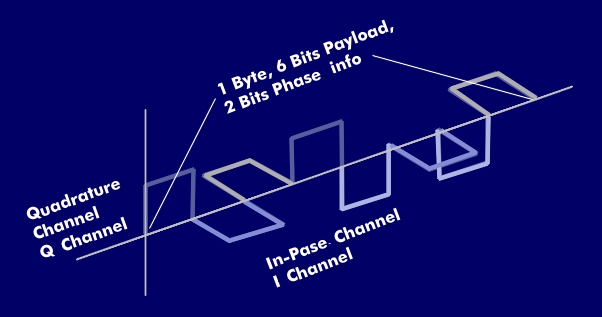complementary code keying (802.11) (CCK)
Complementary Code Keying (CCK) is a multiphase complementary code keying technique used as a modulation technique in 802.11b and 802.11gWLANs. The CCK technique can pack and transmit multiple bits into one symbol, resulting in a higher transmission rate. CCK does not use subcarriers but uses the entire channel as a carrier. It provides data rates of 1, 2, 5.5 and 11 Mbit/s.
At a data rate of 11 Mbit/s, the CCK modulator is fed with a data rate of 1.375 MB/s. Each byte of the modulation signal consists of 6 bits for the useful signal and 2 bits for the phase position. The 6 bits are used to determine one of 64 orthogonal codes, and the remaining 2 bits are used to determine the phase position of 0°, 90°, 180° and 270°. The coded signal is split into the phase positions 0°/180° and 90°/270° - one phase position representing the in-phase channel or I-channel, the other the quadrature channel or Q-channel - and modulated in the IQ modulator. The resulting symbol rate is 11 Mbit/s and occupies the entire channel bandwidth.
The 802.11g standard mentions two hybrid methods in connection with CCK: CCK- OFDM and CCK- PBCC. Both methods use CCK for the header and Orthogonal Frequency Division Multiplex (OFDM) or the Packet Binary Convolution Code (PBCC) for the user data.

